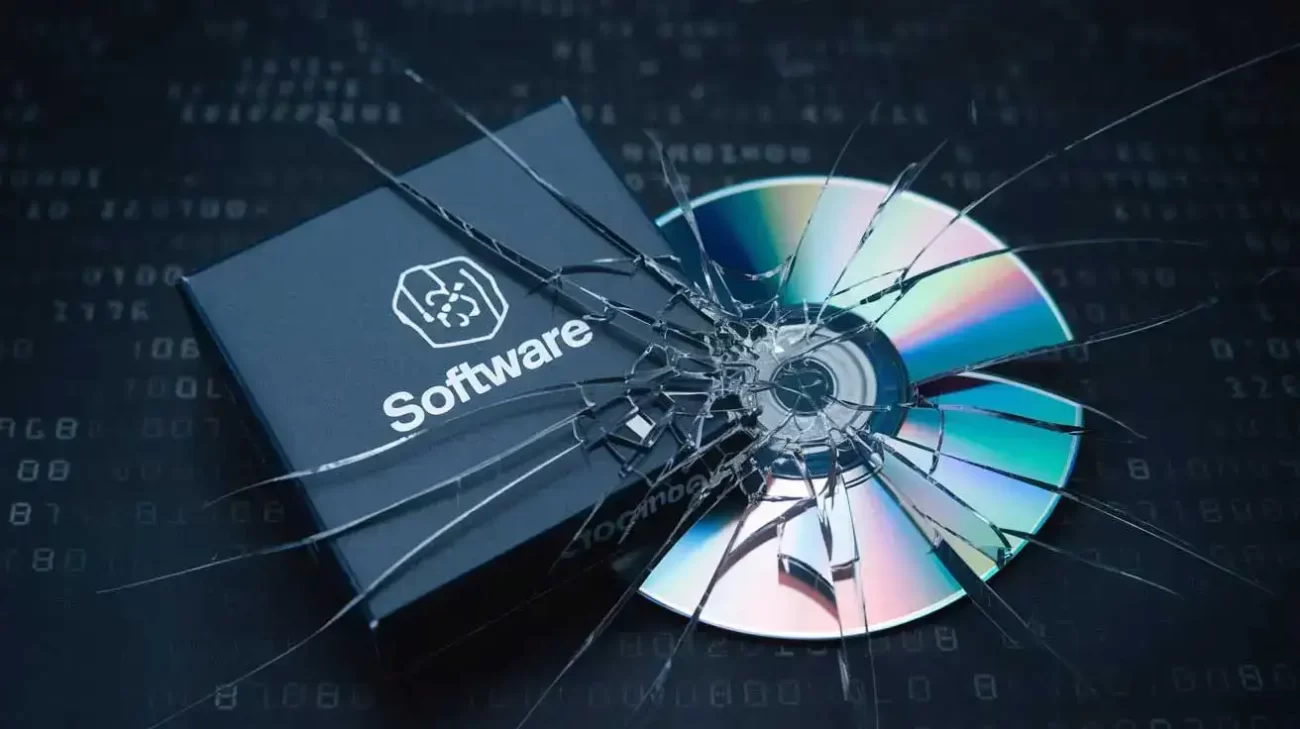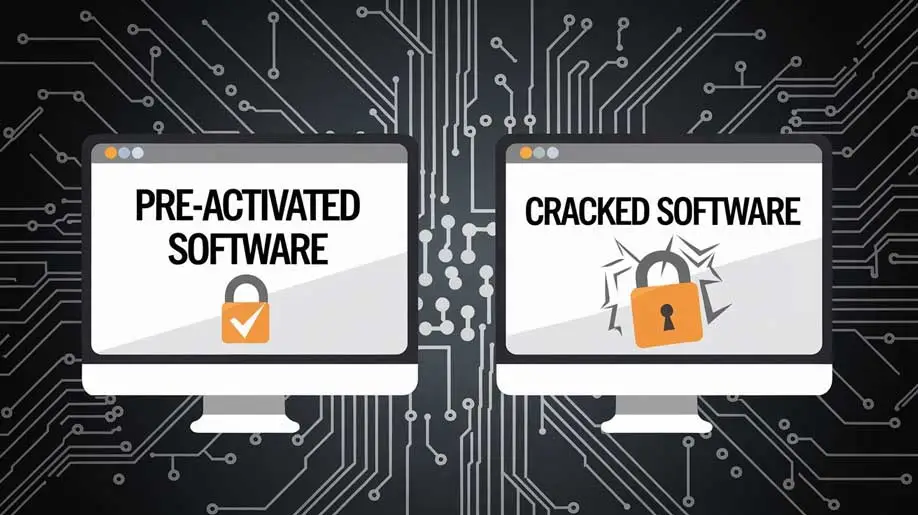In today’s world of digital convenience, accessing premium software without paying the full price is a temptation for many. Two common terms often encountered are “pre-activated software” and “cracked software”. At first glance, both may seem like convenient ways to get software for free, but the reality behind these methods carries significant security risks and ethical concerns. In this blog, we will break down what these terms mean, how they differ, and the potential dangers of using such software.

What is Pre-Activated Software?
Pre-activated software refers to a version of a paid software program that has already been activated using a valid license key. Essentially, when you install pre-activated software, you bypass the usual activation process, as the software has been altered to believe that it is already legally licensed.
Characteristics of Pre-Activated Software:
- License Bypassed: The software has been modified to skip the activation phase.
- No Additional Steps Required: Upon installation, it immediately appears as a fully functional version without asking for a serial key or license code.
- Often Shared on Warez or Torrent Sites: This type of software is often distributed on piracy websites.
What is Cracked Software?

Cracked software is software that has been modified by third parties to remove copy protection mechanisms like Digital Rights Management (DRM). Software developers use DRM to ensure their software is used by licensed users only, but cracking involves modifying or bypassing these protections.
Characteristics of Cracked Software:
- Altered Files: A crack alters or replaces essential files in the software to bypass the activation or verification process.
- Patches or Keygens: Some cracks require you to use a patch or keygen (key generator) to generate a working serial key or modify the executable files.
- Often Illegal: Cracked software is often shared illegally on torrent websites or forums.
Key Differences Between Pre-Activated and Cracked Software

While both types of software allow users to access premium features without paying for a license, there are distinct differences in how they work:
| Feature | Pre-Activated Software | Cracked Software |
| Activation Method | Pre-activated by using a valid license key | Software’s DRM is bypassed or removed |
| Installation | Automatically installed as a licensed version(usually need to copy some activation files to installed location) | Often requires patches or keygens |
| Security Risks | No malware and backdoors | More vulnerable to viruses, malware, etc. |
| Legality | Usually illegal | Illegal in almost every scenario |
| Source | Shared on pirated sites | Shared on torrent sites, warez, etc. |
The Process of Pre-Activation and Cracking Software
Pre-Activation Process
Pre-activating software typically involves manipulating the installation package to include an already valid serial key or activation method. Here’s a simplified look at how it works:
- Valid License Key: A valid key is obtained—sometimes through legal means, often via bulk purchase or shared credentials.
- Modification of Setup: The software’s setup file is altered to embed the license key or bypass the need for one.
- Final Distribution: The modified software is then shared on piracy websites for users to download and install directly, without requiring a key.
Cracking Process
Cracking software is a more involved process and can take different forms. The most common techniques include:
- Decompiling the Software: Hackers reverse-engineer the software to understand how its protection mechanisms work.
- Bypassing DRM: The DRM system is modified or removed to allow the software to run without verifying a valid license key.
- Creating a Patch or Keygen: Sometimes, hackers develop tools like patches or keygens, which allow users to generate fake license keys or bypass activation.
- Redistribution: After cracking, the software is shared across the internet, usually through torrent sites or forums.
Security Risks Associated with Pre-Activated and Cracked Software
Both pre-activated and cracked software pose severe security risks. While the temptation to use such software is high due to cost savings, the potential dangers far outweigh the benefits.
1. Malware and Viruses
- Pre-Activated Software: Since pre-activated software is often shared in exchange of money on piracy websites, it is hard for hackers to bundle malware or viruses with the installation files.
- Cracked Software: Cracked software are highly prone to malware. The executable files that are altered to bypass protection mechanisms can often carry hidden viruses, spyware, or ransomware.
2. Backdoors for Hackers
- Pre-Activated Software: It is safe from backdoors in the pre-activated versions, allowing them to control your system remotely. This puts your personal data at risk and can lead to identity theft or unauthorized access to sensitive information.
- Cracked Software: Cracked software often contains trojans and other backdoor programs that give hackers access to your computer. Once installed, they can monitor your activities, steal personal data, or even lock you out of your system.
3. Lack of Updates
- Pre-Activated Software: Most pre-activated software cannot be updated because updating it may revert it to its unactivated state. This leaves users with outdated software that lacks the latest security patches.
- Cracked Software: Cracked software is even more dangerous in this respect because developers often stop you from accessing updates, which can lead to vulnerabilities that hackers can exploit.
Ethical Considerations and Impact on Developers
While security risks are significant, it’s also important to consider the ethical aspect of using pre-activated or cracked software:
- Financial Impact on Developers: Software developers, especially small businesses and independent creators, lose revenue when their software is pirated. This can lead to less innovation and fewer updates, affecting all users in the long run.
- Violation of Terms of Service: Using unauthorized software directly violates the terms of service of most software products, which can result in legal actions against the user.
Safe Alternatives to Pirated Software
If you’re hesitant about paying for software, there are safer alternatives that respect both your security and the developer’s rights:
- Freeware and Open Source Software: Many open-source and freeware programs provide powerful features without the need for a license. Popular examples include LibreOffice (as an alternative to Microsoft Office) or GIMP (an alternative to Adobe Photoshop).
- Trial Versions and Discounts: Many software companies offer free trials or discounts for students and professionals. This can help you access premium features legally.
- Subscription Services: Opting for a subscription model instead of a one-time purchase can make software more affordable over time.
Conclusion
While pre-activated and cracked software may offer free access to premium features, the security risks, legal consequences, and ethical concerns make them poor choices for both individual users and organizations. The potential for malware, lack of updates, and unstable performance can compromise your system and data, leading to far greater costs than simply purchasing the software legally.
It’s always safer and more responsible to explore legal alternatives such as open-source software, free trials, or affordable subscription models to ensure both security and legality in your digital operations.



